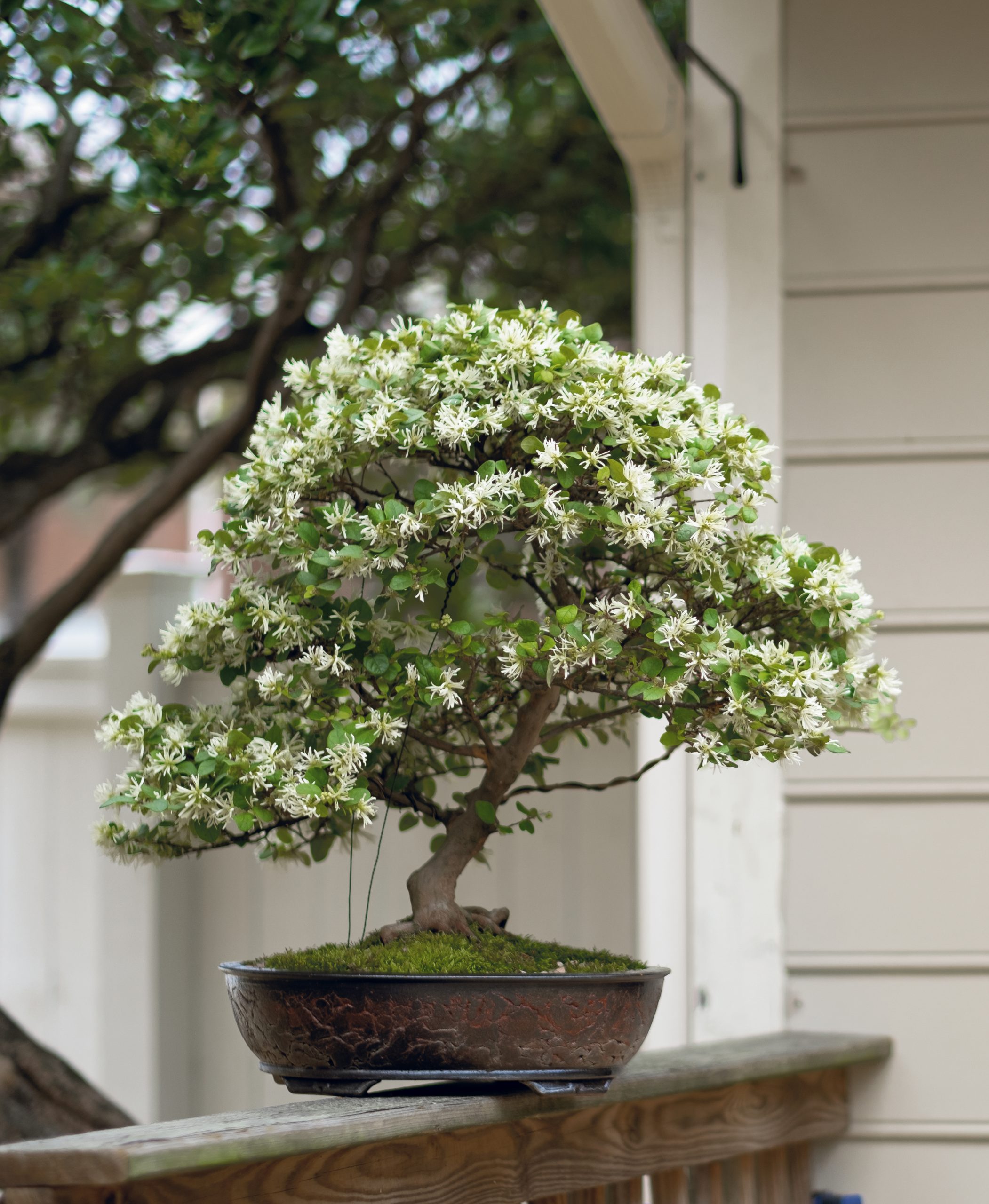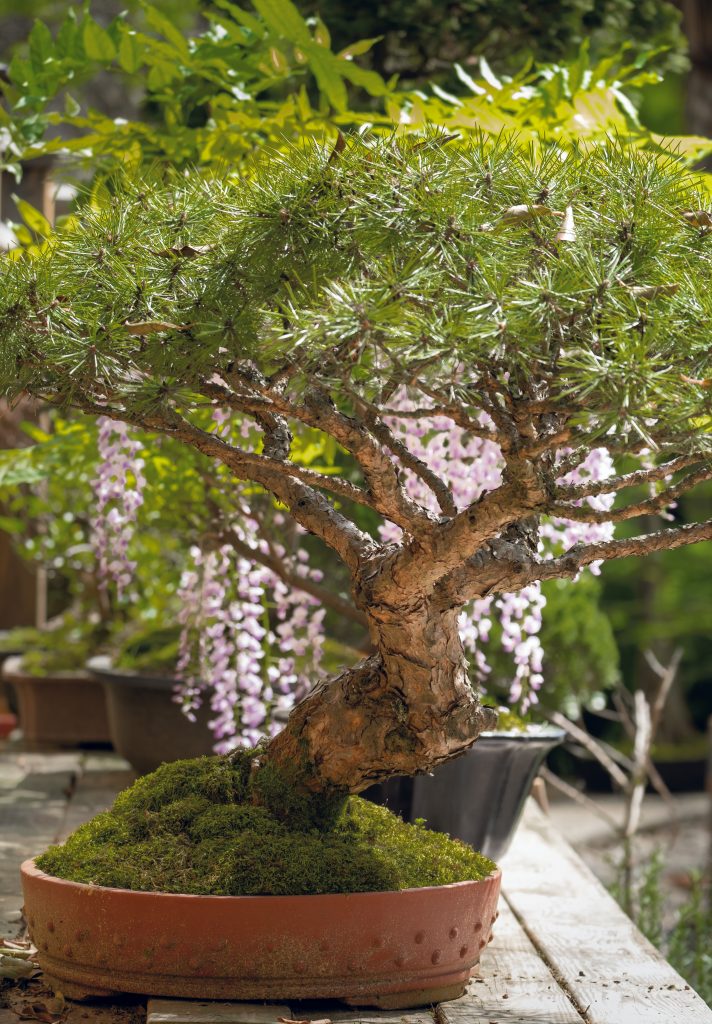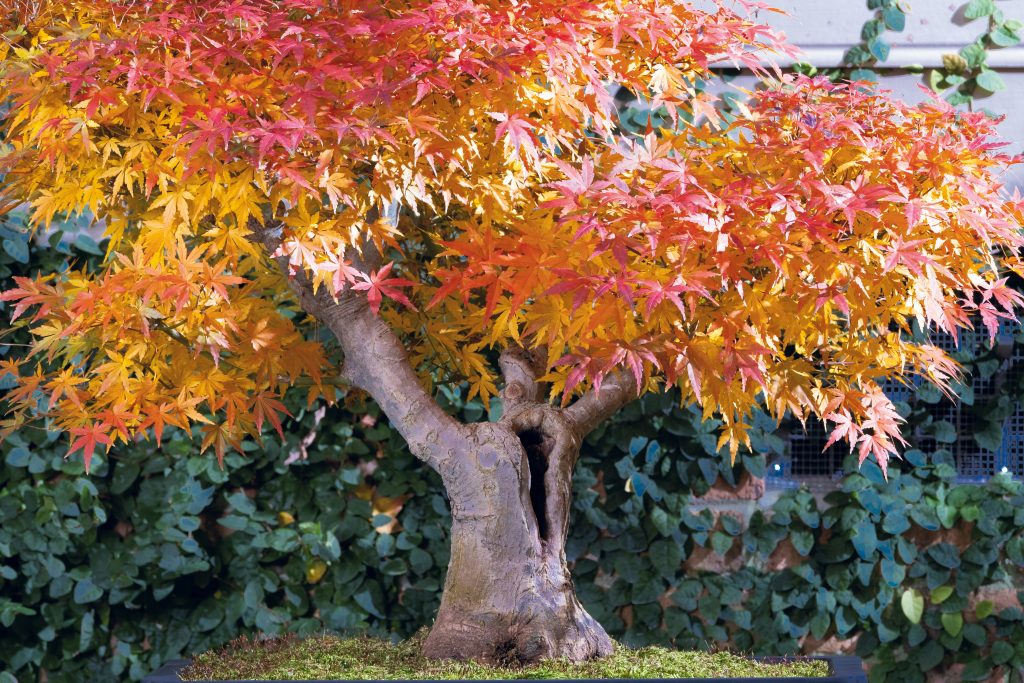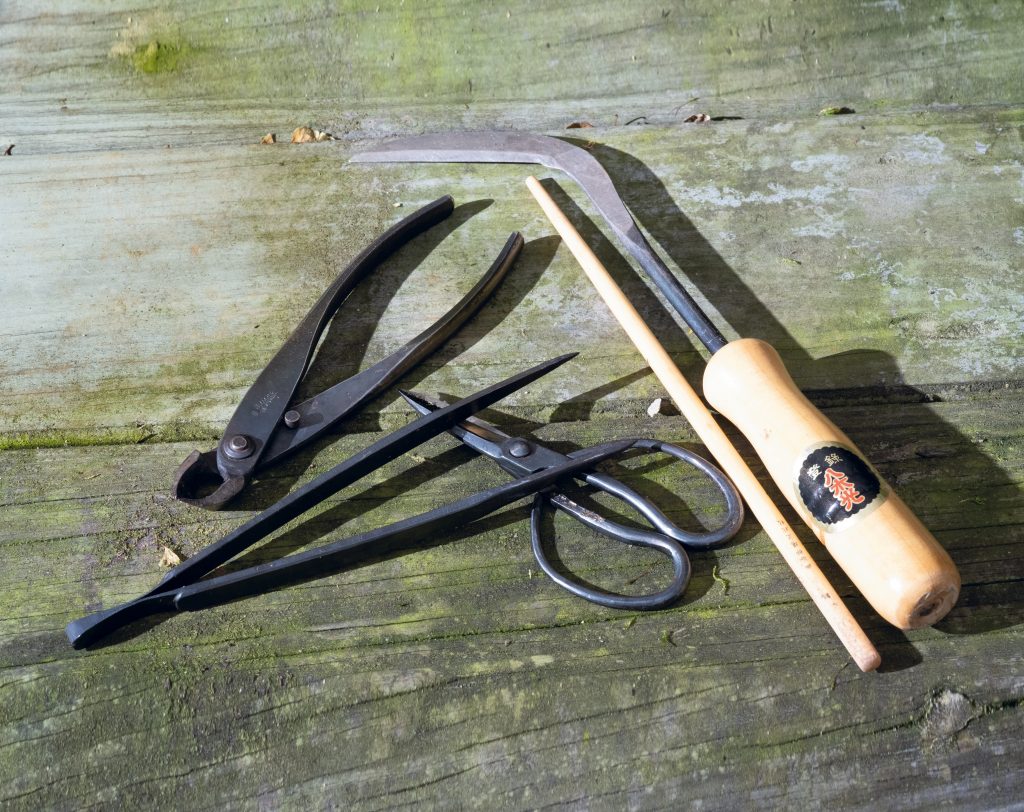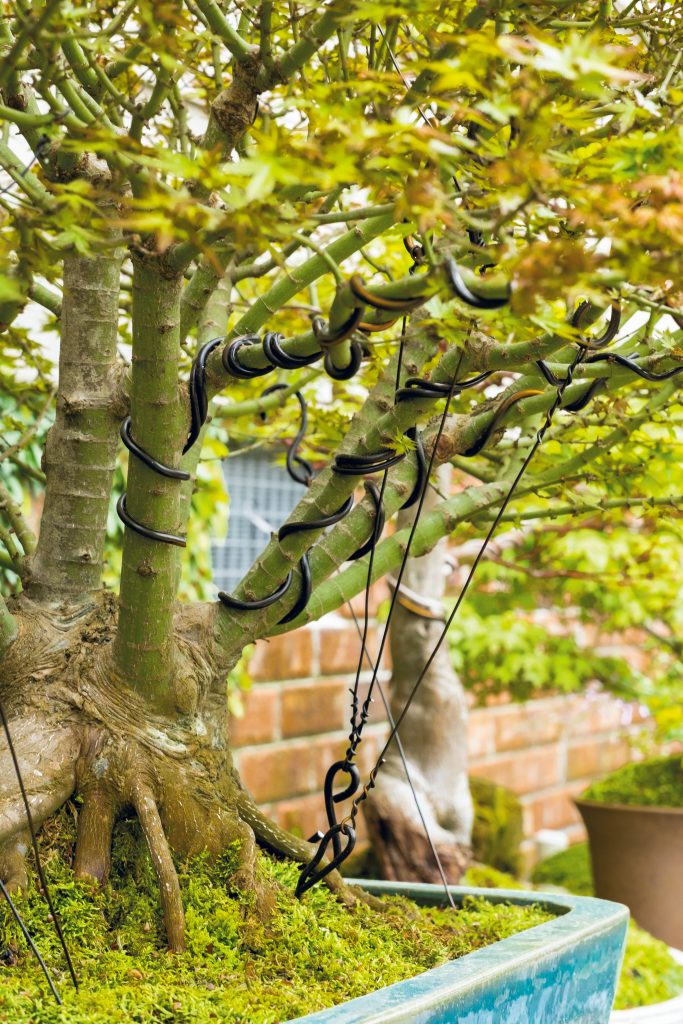
This Chinese Wisteria has been in training since 2008.
To many, the term bonsai evokes images of Mr. Miyagi, a character in the film The Karate Kid, precisely manicuring a tiny tree as he provides words of wisdom to his protégé, Daniel. In reality, bonsai, pronounced “bone-sigh,” is so much more than a perfectly pruned juniper.
Bonsai provides a beautiful amalgamation of art, horticulture, and meditation — mixed with a great deal of patience. The word bonsai is a Japanese term; however, bonsai actually began in China around 700 A.D. During the Kamakura period, 1192-1333, Japan adopted most of China’s cultural trademarks. The bonsai art form was redeveloped under the influence of Japanese Zen Buddhism at that time.
Interest in bonsai in the United States occurred much later in the 1940s, when Japanese migrating to the Americas introduced the art form. Columbia resident Chip Griffin learned of bonsai in 1989 from friends who had been stationed in Korea and Japan. As a triple major in visual art, history, and biology, Chip was drawn to bonsai, which seemed like a natural hobby for him. “If you think about it, bonsai is the culmination of all three interests, with its historical and sculptural context in addition to being astute when it comes to horticultural processes,” he says.

While Chip has more than 60 books on the practice, he was lucky enough to spend time with people who did bonsai professionally. He was associated with a Trappist monastery in Conyers, Georgia that was not only one of the largest Japanese pot importers in the United States but also specialized in bonsai. He even had the opportunity to work with bonsai master Roy Nakatoshi, who managed the bonsai trees for The Karate Kid.
Chip, who considers himself only a hobbyist, has curtailed his collection from 600 trees to around 150, which is still quite an undertaking. Chip’s compilation includes plants from South America, Africa, Korea, Japan, and the Americas. He has also inherited some trees from well-known bonsai practitioners from Florida to Maine and many places in between. His trees range from 6 inches to 4 feet in height. “I reduced some trees from 20 feet tall, cut them down to a manageable height, and regrew and trained them to the current level,” he says.
“With bonsai, you have to think of it more like caring for a pet than a tree,” adds Chip. “You have to water every day, carefully fertilize, transplant on a certain schedule, and constantly ensure each tree has the right amount of light. You have to be in tune with the trees.”
Bonsai certainly requires a commitment. Its literal translation is “tree in a pot.” With land once considered at a premium in Asia, bonsai was a creative way for people to take a piece of the forest and have it with them at all times. In bonsai, trees are trained and stylized with hopes of recreating the look of an ancient tree in the forest. A well-rounded green juniper plant is a typical adaptation, yet bonsai trees come in all shapes and sizes. From pines to azaleas, ficus to tropicals, each tree can be cultivated into a lovely work of art and nature.

While the size and shape of the tree can be manipulated, bonsai cannot change the genetics of the plant. “You can never get the fruit or flowers of the trees to shrink, but you can get the leaves to become more diminutive,” says Chip. The roots of the tree are below the ground; the shoots are everything above. When plants are put in a pot, their natural tap root is removed, causing the plant to forever grow root hairs. This forces the tree to constantly regenerate and put out new shoots and hair roots. Placing the plant in a container manipulates the plant’s hormones and natural physiological mechanism. Continually pruning the shoots and roots of the plant causes it to dwarf artificially over time. The leaves become smaller because of the restricted environment. By restricting the root mass and through pruning and training, the plant will eventually become more compact.
“But you can’t override the genetics,” says Chip. “That’s why the fruit and flowers will stay the same. It’s not practical to take a magnolia and make it 2 feet tall because the flowers will still be very large.”
In fact, some bonsai are crafted solely for the appreciation of the flower. With flowering bonsai, the flowers are so prolific that the leaves are barely visible. From the most famous Satsuki azalea to magnolia and wisteria, flowering bonsai trees are spectacular works of art.
In addition to the horticultural aspect, many individuals partake in the art of bonsai for its healing, meditative qualities. In Zen Buddhism, perfection does not exist. So it is with the bonsai tree. Continually working on the tree and trying to get it as close to perfection as possible becomes a form of meditation for some.
“You can do tai chi, martial arts, raking rocks in a garden, or styling trees,” says Chip. “We all have that vision of trying to attain perfection in all aspects of our lives. But with bonsai, you are never truly finished with the plant. You can only get it to a certain point.”
And because of this, bonsai hobbyists must also bring with them a multitude of patience. “I can very peacefully work on a tree for eight hours. It does foster patience,” Chip says. “This is certainly not a hobby for someone who wants instant gratification. Sometimes it takes decades. I have some plants 100 years old that have passed through hands before mine. I try to build on that foundation that they started, and 30 to 40 years later, it’s not the same tree. You honor the way they started it and you make it your own. It’s a constantly evolving art form.”
Almost equally as important as the tree — and patience — is the pot in which the tree is placed. Many times, the expense lies there. In the art of bonsai, the tree and its container must have harmony as the uprooted tree will now find its home in the pot. The display of the tree, from height to angle, is also important.
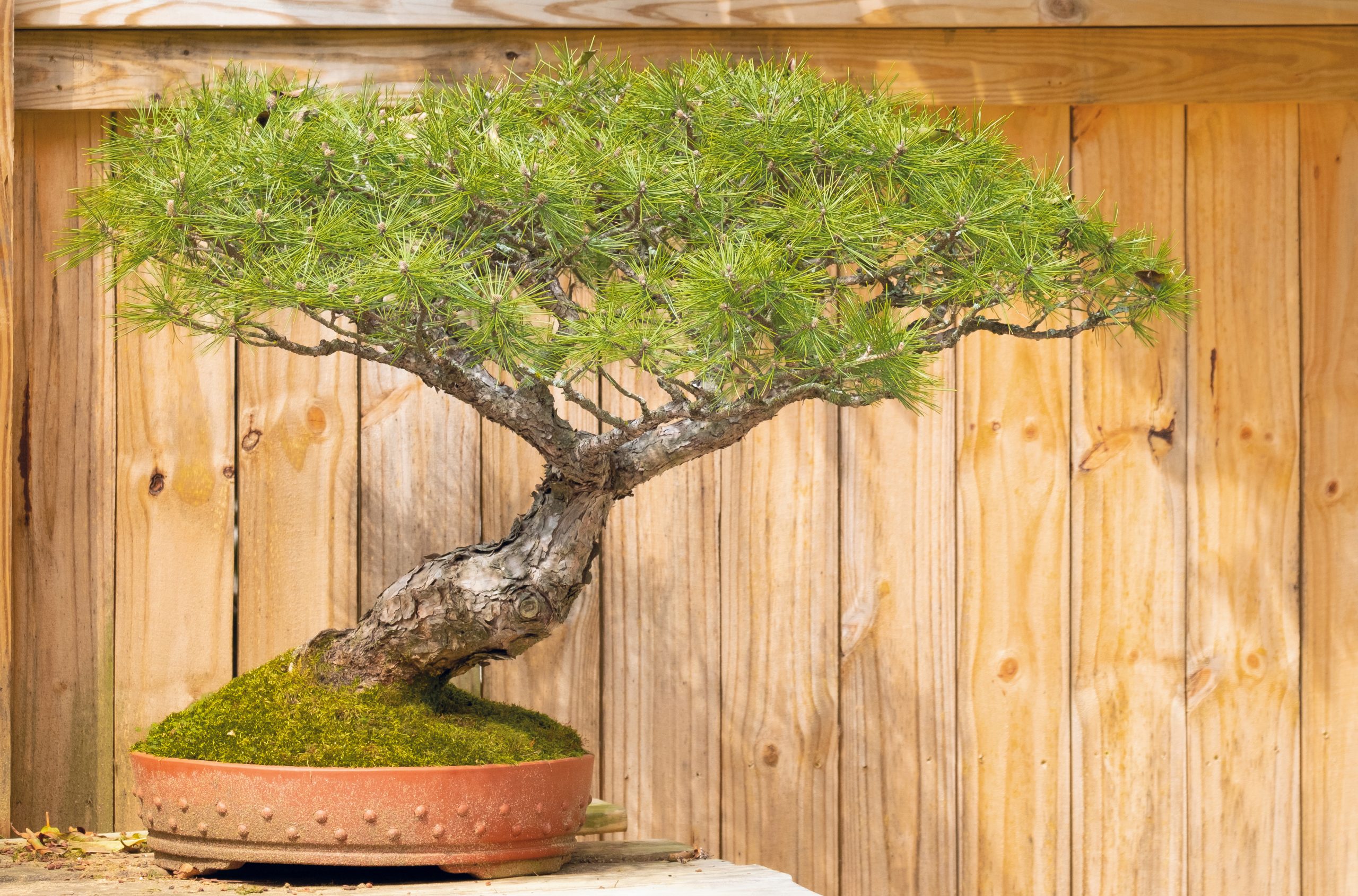
“When you get into bonsai, you are often spending money on pots,” says Chip. “It’s important to get a pot produced by a reputable potter. They have to be fired and made of clay that can take freezing and thawing. The glazes and shapes are highly specialized. Some people just collect the pots!” Some even trade bonsai trees for special bonsai pots.
To be a meticulous bonsai artist takes specialized tools as well. And, like bonsai, with these tools comes much tradition and specialty. In many cases, the tools are made in the same tradition as the ancient sword maker. “You can get inexpensive tools that are mass produced, but the high-quality tools are still handmade by artisans,” says Chip. “I have a specialized set of tools that, when rolled out, is 6 feet long.”
For the beginner, three tools are the most important: a concave cutter, a good pair of scissors, and an X-Acto knife. “If you begin with these three tools and buy a ficus, a juniper, and a maple, you can learn every technique in bonsai. Once you get the sense of how to do it, then you can expand. And if you enjoy it, you can spend endless hours trying to perfect it,” says Chip.
Having the appropriate tools is critical in many ways, including helping to ensure the tree does not have bulges when it scars over. It is this precision that enables the tree to look as if it grew in the forest rather than being trained into its current shape and size. The training, wiring, and sculpture of the trees give them distinct, historical looks. Cascading bonsais appear to be hanging off a cliff, and windswept bonsais appear to be blowing in the breeze. Some bonsais resemble miniature versions of a grand live oak.
The bonsai tree is as individualistic as its artist. “I can teach anyone the techniques of bonsai, and they can become proficient, but I can’t teach you how to conceptualize,” says Chip. “I can give you the tools and basic tips of how to balance the look, but creating the subtleties that make it an exceptional tree is something you have to do. Many famous bonsai artists have a way of looking at the tree that elevates it above others. To make a tree in a pot look like something from nature that has been on a mountaintop or in the middle of the forest … those are the ones you remember.”
To be sure, the art of bonsai is much more than creating a well-rounded topiary. It is an art form, a meditation, and a natural science lesson. It is learning in Mother Nature’s classroom, one branch at a time.
